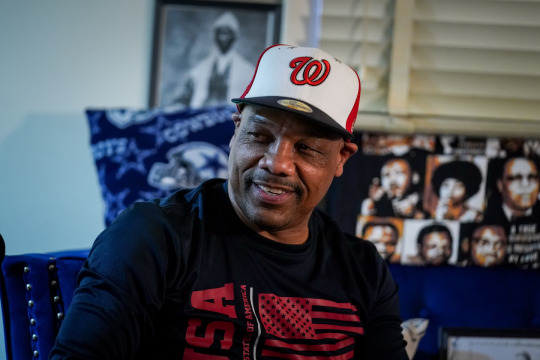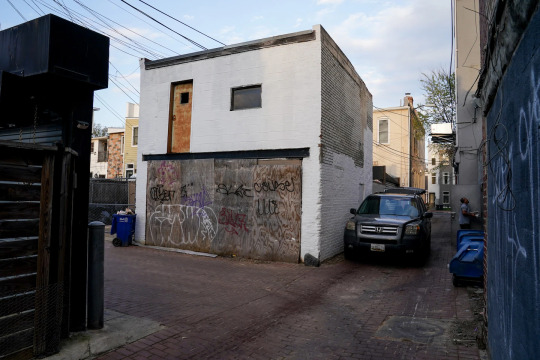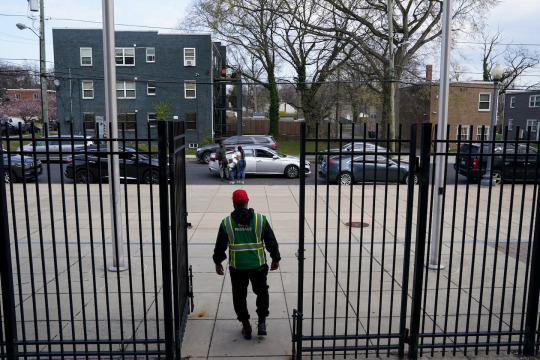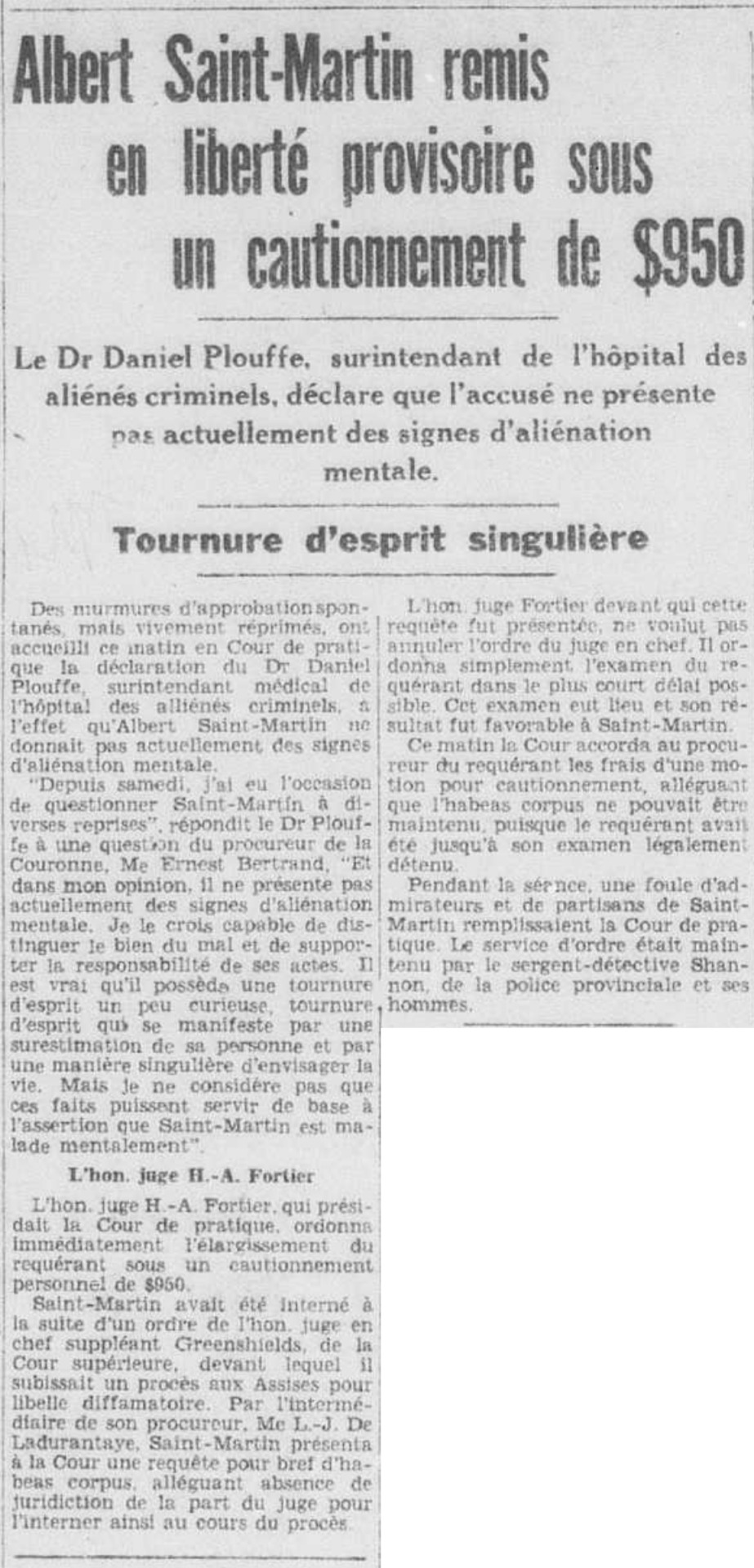#wrongfully imprisoned
Text

Kathleen Folbigg's children most likely suffered from various genetic conditions that led to their deaths. Folbigg was wrongfully imprisoned in 2003 and ordered to serve a minimum of 25 years for the suffocation murders of three of her children and manslaughter for the fourth.
source 1
source 2
source 3
#destiel meme news#destiel meme#world news#news#tw death#tw child death#kathleen folbigg#is true crime not allowed to tag?#<- thats my true crime tag i guess#australia#wrongfully imprisoned#wrongfully convicted#acquittal
49 notes
·
View notes
Text

From left: Charles Turner, Timothy Catlett, Levy Rouse, Chris Turner, Russell Overton and Clifton Yarborough, attend the funeral for their friend Kelvin “Hollywood” Smith on Oct. 27 in Capitol Heights, Md. (Jahi Chikwendiu/The Washington Post)
https://wapo.st/3PFKslz
Clifton Yarborough patted his chest as he turned his gray Honda into a narrow alley in Northeast Washington. “My heart racing fast,” he said. He eased the car to a stop and pointed to a garage behind a rowhouse. “That’s it,” he said. “That’s where it happened.” There was graffiti on the weathered plywood door. Otherwise it looked ordinary. There was nothing to indicate what had unfolded in the small structure 39 years earlier.
The alley in the H Street neighborhood is around the corner from the home where Yarborough, 56, grew up, but this is the first time he has been here since he was a teenager. He didn’t want to stay long. He put the car into drive and pulled away from the place where a 49-year-old mother of six from the neighborhood was found dead in 1984, the victim of a brutal beating and rape.
Then 16, Yarborough was the youngest of 17 people arrested in the case. He and seven other young men from the neighborhood would eventually be tried, convicted and incarcerated for a combined 258 years. Justice, it seemed, was served.
But the men have insisted all along that they had nothing to do with the rape and the murder. That they didn’t know anything about those crimes. That their trial wasn’t fair.
Kelvin Smith, who served 35 years before being released in 2019, died at home in October. Steven Webb died in prison in 1999 after a stroke. He had served 15 years. The other six men — Yarborough, Christopher Turner, Charles Turner, Timothy Catlett, Levy Rouse and Russell Overton — are now in their 50s and 60s.
They have completed their sentences and been released from prison. The final one got out just last year.
But this ghastly crime hangs over them. They are free, but not free.
What they want, they say, is for their names to no longer be associated with one of the most vile crimes in Washington history. And they want the government that prosecuted and jailed them to admit it was wrong for not sharing evidence they believe would have helped them prove their innocence.
All of the men now live in Washington or its close-in suburbs. They have jobs — forklift driver, maintenance worker, parking lot attendant, janitor, warehouse worker.
They have reconnected with their families and friends and are trying to shape a new life in a city and world that has changed immeasurably from the city and world in which they grew up. Their newly free lives are dominated by thoughts of what they’ve lost and what they can still salvage.
“What hurts is my character being slandered, that people say I would do such a thing that I didn’t do, especially to someone I knew,” Yarborough said. “Clear this. Make it be known we didn’t commit this crime.”
Rouse says it is hard for him to trust anyone. He was 19 when he was arrested and had a newborn son,whom Rouse wouldn’t see in person until his release in 2019.
“I wrote letters to him a lot, and when he grew older he would write me back, saying — Dad, I know you’re innocent and I’m always going to love you,” Rouse said. “It hurts me inside to know he had to go through that.”
Rouse says he and his 39-year-old-son are now the best of friends, making up for time they were apart.
Since getting out of prison, Rouse has focused on moving forward.Now a maintenance worker, he has completed computer courses from a career training school. He also counsels other former prisoners who have recently been released. And in September, he got married. “It’s wonderful, wonderful,” Rouse said. “Best thing that ever happened to me.”
But even as he looks forward, Rouse can’t let go of the past. “It’s important the truth comes out because they know they was wrong,” he said.

Charles Turner lives at brother Christopher’s apartment in Southeast Washington. He has a full-time maintenance job at the Martin Luther King Jr. library in downtown Washington. He’s determined to reclaim his time.
“They took 36 years from me, so I plan to be out here alive for another 36 years,” Turner said. “I’m gonna get those 36 years back.”
Turner, 59, said he feels cheated that he was locked up when his mother died and that he couldn’t say goodbye to her. And he laments never having children.
“Being locked up, they took my bloodline,” he said. “No one is gonna ever know I was even here.”
Christopher Turner, nicknamed “the Mayor” by other defendants, was the first to bereleased. He was given a shorter sentence than the others because he had completed high school and had no criminal record. In prison, he spent much of his time reading and learning about the law. While incarcerated and in the years since his release in 2010, he has led the effort to clear his name and those of his fellow defendants.
Along the way, Christopher Turner has also become an advocate for prisoners. He is on the board of the Mid-Atlantic Innocence Project, which works to prevent and overturn convictions of innocent people, and Free Minds, a D.C.-based book club and writing workshop for incarcerated youths.
The men’s effort to continue lobbying for their innocence while reentering the workforce and reconnecting with their families and their city, Christopher Turner admits, is wearying.

“I know the guys are really tired,” he said recently over breakfast at a Capitol Hill diner. “We’re trying to move on with our lives. But this is still a fight we need to fight. As long as there’s air in my body, I’ll continue to fight.”
The men compare their case to that of the Central Park Five, the five teenagers from Harlem who were convicted of the 1989 rape of a woman and spent years in prison before DNA evidence and a confession led to their convictions being overturned in 2002.
But this murder occurred before the use of DNA in solving crimes began, and no evidence that can be tested survived. And unlike the Central Park case, no one else has come forward to admit guilt.
Over the years, the men have unsuccessfully appealed their convictions.
In 2017, at the Supreme Court, their attorneys argued that prosecutors violated the Brady rule by not turning over evidence to the defense. The court ruled 6-2 that the withheld evidence would not have made a difference in the outcome of the case. After that decision, the men were out of options.
But their attorneys and some of the most powerful law firms in Washington have stuck with them.
“I wouldn’t represent them if I thought they had any involvement in this whatsoever,” said Shawn Armbrust, executive director of the Mid-Atlantic Innocence Project and Christopher Turner’s attorney. She has been working with the defendants since 2005. “Our standard is — you can’t have any involvement in the crime. If we find evidence pointing to guilt, we’re done.”
But there are no legal appeals left to file. No courtroom arguments left to make. No witnesses left to cross-examine.
For the defendants and their attorneys, their only hope may be a presidential pardon. And that, all of them acknowledge is, a long shot.

Crime was a problem in Washington in 1984, especially in the busy, blue-collar corridor of H Street NE. Murders in D.C. were nowhere near the astronomic levels they would climb to in the late 1980s and ’90s, but they weren’t rare either.
Among them, one murder stood out: The Oct. 1, 1984, killing of Catherine Fuller.
Fuller was 49, Black, a married mother of six who lived a short walk from the alley behind H Street where she was found dead on that rainy October day. She had been beaten and sodomized with a pipe-like object. It tore through her intestines and abdomen, according to medical examiners. Her ribs were broken. Fuller weighed less than 100 pounds. She had been robbed of $50 and some jewelry.
Years later, her son David Fuller would remember her as “a loving, caring parent.” His mother, he told The Washington Post in 2017, “was the type of person who would go out of her way to do anything for you.”
The pressure on police and politicians to find the culprit — or culprits — was intense. The most promising information came the first day, when a street vendor who found the body told police he saw two men acting suspiciously in the alley, one with an object under his coat. They ran when police first approached the scene.
But there was little else to go by. Then a couple of anonymous phone tips. A caller referenced the “8th and H Crew” and mentioned a few names.
Three days after the murder, detectives, acting on the tip, picked up Yarborough. Then 16, Yarborough was a special-educationstudent at Eastern High School. His IQ was below 70, and he had difficulty reading. He was interrogated for hours without a lawyer or a parent present.
Yarborough said he told police he didn’t know anything about the crime, but he eventually signed a statement that provided some details and names. He would later say he signed the document because he was scared.
Despite the early leads, the investigation stalled. It was not until late November that a 16-year-old girl gave police the name of Calvin Alston, a person she said had talked about committing the crime. The girl later acknowledged being high on PCP when she was interviewed by police. Alston denied being involved but eventually gave police information about Fuller’s death and a few names, including Yarborough’s. Later Alston would testify that police threatened him with life in prison if he didn’t admit to a role in the murder.
The detectives brought Yarborough back in.
According to Yarborough, the questioning this time was relentless. He said detectives slammed him against a desk, injuring his knee, and held his head above a flushing toilet. The detectives denied those allegations under oath and said the injury was preexisting.

Eventually, Yarborough said, the detectives wore him down. He said they read a statement to him given by Alston and told him to corroborate it. Yarborough agreed, and his statement was videotaped.
“The homicide people interrogated me to a point where I wanted to do anything to get out and go home,” Yarborough said, sitting at a Starbucks across from a Whole Foods on a revitalized H Street that bears little resemblance to the neighborhood in which he grew up. “First they had to calm me down from crying.”
His attorneys would later argue that Yarborough’s testimony was coerced. The two lead detectives and a police officer who worked on the case either declined or did not respond to interview requests for this story.
Yarborough’s statement became crucial evidence that helped lead to the arrests and conviction of his fellow defendants and cemented the idea in the public mind that the crime was the work of a ruthless gang, the “8th and H Crew.” All of those charged, however, said there was no gang. Some of them didn’t even know one another.

Ultimately, 10 people were brought to trial in 1985 for Fuller’s murder. After deliberating for seven days, the all-Black jury found two defendants not guilty and six guilty. The jury told the court it was “impossible” to reach a unanimous verdict for Christopher Turner and Russell Overton.
The judge ordered the jury to continue deliberating, and two days later, the jury returned with guilty verdicts for both men. It had taken “40 to 50” more votes to reach a unanimous decision, jurors told reporters later.
Christopher Turner, then 20, was stunned. He was so certain he would be found innocent that he had turned down a plea deal that would have required him to serve just two to six years. Taking a plea deal for something he hadn’t done was something he objected to on principle, he said. “People still ask me, do you regret not pleading guilty and going on with your life? And my answer is no, emphatically no, I don’t regret it.”

David Fuller was 16 when his mother was killed. He knew a few of the defendants. Christopher Turner was three years older and helped manage Fuller’s go-go band. Yarborough was the same age and lived around the corner. Yarborough said he used to bring pies his grandmother made over to the Fuller house.
Fuller, who now lives in Missouri, originally agreed to be interviewed for this article but then did not respond to messages. The Post was unable to locate Catherine Fuller’s other children. But David Fuller talked about his mother and the case in 2017 for a Post story.
By then, he said, he had found a measure of peace with what had happened. “Even with loss you got to keep going,” he said.
And he acknowledged that some or all of the men may not have been responsible. “My heart goes out to some of the gentlemen if they were falsely accused, because they suffered,” he said.
Russell Overton, 65, folds his 6-foot-7-inch frame into an armchair in the living room of his 85-year-old mother’s tidy Silver Spring home. He has lived here with his sister since his release in March 2022.
Overton, the last of the men to be released, was the oldest of them when they were arrested. He was 26 then and had children. Now he is a great-grandfather and getting to know his family as a free man.
The adjustment hasn’t been easy. Overton still sleeps with his door open and wakes at every sound. He keeps his toiletries in a container on his dresser the way he did when he was locked up. He has a job at a warehouse where he is doing well but is still coming to terms with engaging in pleasantries and trusting people.
“What happened to [Catherine Fuller] was wrong. I’m sorry that it happened. Sympathy for her family,” he said in an interview, leaning forward in his chair. “But there’s no way I can have remorse when I never did have anything to do with it. I wasn’t no angel out there. I got in trouble here and there, but I didn’t do this.”
The system, he said, failed them all.
In 1995, while still in prison, Christopher Turner wrote to Post reporter Patrice Gaines, who had helped cover the original trial. He told her he wanted her to know he was innocent. Gaines looked into the murder and made discoveries that raised questions.
In 2001, Gaines reported that Harry Bennett, called as a witness in the case, told her he had falsified testimony to avoid a life sentence.Bennett said the prosecutor, Jerry Goren, “painted a picture for me. All I had to do was say yes.”
Gaines would also learn a critical piece of information never turned over to the defense. Three weeks after Fuller’s murder, a woman named Ammie Davis told police she had been in the alley that day shooting heroin and saw a man she knew named James Blue. She said Blue savagely attacked a woman and stole money from her in the alley. The week before the Fuller trial began, Blue fatally shot Davis. He died in prison in 1993.
The defendants in the Fuller case challenged their conviction in D.C. Superior Court in 2012 and learned during discovery that another key piece of information was never turned over.
One of the men who ran when police first approached the scene was James McMillan, a 19-year-old who was new to the neighborhood. Three weeks after Fuller’s body was found, McMillan was arrested in two violent assaults and robberies of middle-aged women in the neighborhood. But even though he had been identified at the scene by three witnesses, prosecutors did not share that information with the defense in the Fuller case.
Eight years after Catherine Fuller’s murder, McMillan would be arrested for the murder and forcible sodomy of a woman in an alley in the same H Street neighborhood. He is serving a life sentence in federal prison in Virginia. He declined through prison officials to be interviewed and previously denied any responsibility for Fuller’s death.
During the 2012 proceedings, Goren, the prosecutor, admitted that evidence had been withheld from the defendants. He testified that he didn’t pass on information about McMillan because he did not believe it relevant enough. He also said he didn’t tell the defense about Davis because he didn’t find her story credible.

Reached briefly by phone at his California home earlier this year, Goren declined an interview.

D.C. Superior Court Judge Frederick H. Weisberg ultimately rejected the bid for a new trial, saying the “petitioners have not come close to demonstrating actual innocence.” In 2015, the D.C. Court of Appeals confirmed that ruling. The Supreme Court decision in 2017 ended any hopes the men had of having their convictions overturned.
For some who have followed the case, the Supreme Court ruling was the culmination of a process that has been flawed at every step of the way.
“It’s reaffirmed for me that there are some deep systemic problems in the legal system and that those need to be fundamentally changed,” said Thomas L. Dybdahl, whose book, “When Innocence is Not Enough: Hidden Evidence and the Failed Promise of the Brady Rule,” tracks the legal journey of the Fuller murder defendants in the context of examining Brady disclosure requirements.
Dybdahl argues that even though the Brady rule requires prosecutors to hand over favorable evidence to the defense, they have little incentive to do so because they face little threat of punishment for not adhering to it.
The defendants in the Fuller case “didn’t want mercy, they wanted justice,” Dybdahl said. “Unfortunately, they didn’t get either.”

In 1985, Michele Roberts was a D.C. public defender representing Alphonso Harris, one of the men charged in Fuller’s murder. Roberts, who retired last year as the executive director of the NBA Players Association, remembers the “intense pressure on the government” to get a conviction. Her client was one of the two defendants to be found not guilty.
While her client went free, Roberts said the evidence withheld from the defendants would have been critical to the outcome of the case.
“If I had what we later discovered … all of them would have walked,” she said. “The most powerful evidence that you can present as a defense attorney, if it’s credible, is to be able to say ‘Not only did my guy not do it, but let me tell you who did.’”
John Williams, a lawyer with the powerhouse Washington firm Williams & Connolly who represents Yarborough and argued the men’s case at the Supreme Court, said one option may be available to the defendants to provide them some measure of justice.

Williams said he and the other attorneys are actively considering petitioning for a presidential pardon. It is a complicated process that could take years, and there is no guarantee they will be successful.
“Those are always long shots,” he said. “But these men are incredibly deserving.”
“They were wrongly labeled as murderers. The system still regards them as murderers,” Williams said. “I understand why they’re continuing to fight, and that’s why we are continuing to fight for them.”

In late October, the six surviving defendants wore suits to the funeral of their gregarious and fun-loving fellow defendant Kelvin Smith, known to all of them by his nickname, ‘Hollywood.’ On a breezy, sunny afternoon at a cemetery in Hyattsville, they walked past rows of headstones and markers to the gravesite. One of Smith’s favorite songs, “Bitter Sweet Symphony” by the Verve, played through a speaker nearby.
Smith was Christopher Turner’s best friend. On the day of the funeral, Turner said he thought about how little freedom his friend had been able to enjoy and how he wouldn’t live to see his name cleared. “I felt bad because I wanted him to have that moment,” Turner said.
On days when he struggles to find the energy for this fight, Turner said, he thinks about Hollywood and about Steven Webb, who died in prison. And he thinks about his fellow defendants and their families and friends, whose lives were forever changed by a horrific crime in a small garage in an alley in Washington almost 40 years ago.

“I’m not even sure what keeps me going,” he said. “I just know there’s a fire burning inside me to right a wrong.”
#DC#Wrongfully Imprisoned#Fake Evidence#No Rape#They served decades in prison for a crime they say they didn’t commit#Black Lives Matter#Six men#wrongly convicted of a rape/murder in 1984#with no recourse with no DNA evidence available
7 notes
·
View notes
Text
0 notes
Text

"Albert Saint-Martin remis en liberté provisoire souls SOUS un cautionnement de $950," La Presse. July 11, 1933. Page 3.
----
Le Dr Daniel Plouffe, surintendant de l'hôpital des aliénés criminels, déclare que l'accusé ne présente pas actuellement des signes d'aliénation mentale.
----
Tournure d'esprit singulière
---
Des murmures d'approbation spontanés mais vivement réprimés, ont accueilli ce matin en Cour de pratique la déclaration du Dr Daniel Plouffe, surintendant médical de l'hôpital des aliénés criminels, a l'effet qu'Albert Saint-Martin ne donnait pas actuellement des signes d'aliénation mentale.
"Depuis samedi, j'ai eu l'occasion de questionner Saint-Martin à diverses reprises", répondit le Dr Plouffe à une question du procureur de la Couronne, Me Ernest Bertrand, "Et dans mon opinion, il ne présente pas actuellement des signes d'aliénation mentale. Je le crois capable de distinguer le bien du mal et de supporter in responsabilité de ses actes. Il est vrai qu'il possède une tournure d'esprit un peu curieuse, tournure, hommes. d'esprit qui se manifeste par une surestimation de sa personne et par une manière singulière d'envisager la vie. Mais je ne considère pas que ces faits puissent servir de base à l'assertion que Saint-Martin est malade mentalement."
L'hon. juge H.-A. Fortier
L'hon, juge H.-A. Fortier, qui présidalt la Cour de pratique, ordonna immédiatement l'élargissement du requérant sous un cautionnement personnel de $950.
Saint-Martin avait été interné à la suite d'un ordre de l'hon. juge en chef suppléant Greenshields, de la Cour supérieure, devant lequel il subissait un procès aux Assises pour libelle diffamatoire. Par l'intermédiaire de son procureur. Me L-J. De Ladurantaye, Saint-Martin présenta à la Cour une requête pour bref d'habeas corpus, alléguant absence de juridiction de la part du juge pour l'interner ainsi au cours du procès.
L'hon fuge Fortier devant qui cette requête fut présentée, ne voulut pas annuler l'ordre du juge en chef. Il ordonna simplement l'examen du requérant dans le plus court délai possible. Cet examen eut lieue et son résultat fut favorable à Saint-Martin.
Ce matin Ia Cour accorda au procureur du requérant les frais d'une motion pour cautionnement, alléguant que l'habeas corpus ne pouvait être maintenu, puisque le requérant avait été jusqu'à son examen légalement détenu.
Pendant la séance, une foule d'admirateurs et de partisans de Saint- Martin remplissaient la Cour de pratique. Le service d'ordre était maintenu par le sergent-détective Shannon, de la police provinciale et ses hommes.
#montreal#psychiatric examination#wrongfully imprisoned#the asylum as prison#hôpital des aliénés criminels#wrongfully convicted#released from prison#great depression in canada#crime and punishment in canada#history of crime and punishment in canada
0 notes
Text
Stromer!!!
#caps lb#i knew you were innocent!!#wrongfully imprisoned#dylan strome#lol listen he is innocent and has done nothing wrong in his life
0 notes
Text


do you trust me
do you see my vision
#jojo's bizarre adventure#jojo no kimyou na bouken#donatello versace#donatello versus#jolyne cujoh#wrongfully imprisoned besties 🫰🏻#two toned hair and pronouns 👍🏻#do u understand#can anyone hear me#i was gonna say 'let the dio sons be a part of the found family' but then i remembered they're literally Jolyne's blood relatives#I'm very smart and my brain is huge#jjba fanart#stone ocean
181 notes
·
View notes
Text
when u want to like a character so so bad but theyre a cop so its impossible

#sorry even if theyre hot my first thought will always be 'cop' and it kills all desire#slams head thru wall#vi arcane i want to love u so bad......but i look at u and see COP and its over for me 😐#and her cop gf 😐😔#before anybody gets mad at me im just sad 😔 shes great otherwise like she fits my fave types but this wall is insurmountable#she grew up in the SLUMS and they make her an ENFORCER??? die#she was wrongfully imprisoned for like a decade and they make her an enforcer 😐😐😐😐#after finishing arcane i went to read her lore 😐#felt so Liberal 😐😔 weh weh both sides bad type beat#girl its not too late please dont be a cop and cait pls leave the force PLEASE i cant defend you like this#anybody else trapped in this torture prison abt her or is it just me please tell me im not alone in this#every time i see her on my dash it pains me so much like physically mentally....#its ok at least i have my other vi who fights ex military with her gf to avoid becoming soldiers in a pointless war :) blink blink#it speaks#only posting this bc i need to know who else is suffering over this.............. it cant just be me
88 notes
·
View notes
Text

“And when will you leave?” he asks again. “When are you leaving? After Florida?”
Steve rolls them sideways, rolls them so Eddie is flat on his back, so his emotion-wrought muscles can slump with the weight of gravity, so all he has to do is gaze up at Steve hovering just above him and promising, “never leaving. Not without you. Never again.”
» Steddie // Rated M // Escaped Prisoner!Eddie // 2.3k
» Febuwhump #12: Presumed Dead & "I'm doing this because I care about you"
» Febuwhump Masterlist
read on ao3 // preview under the cut
He hears the haste in the footsteps outside his room before anything else, the way they land heavier than everyone else who has come and gone throughout the day.
He hears the testing of the knob next, the turning of it when it doesn’t meet resistance, and then the slide of the door against too-tall carpet.
He opens his eyes to meet the opening of the door and he does it just in time to watch the tension on Steve Harrington’s face melt.
Steve Harrington, full beard and wire-rimmed glasses, a bit of extra meat on his bones since the last time Eddie saw him in person, since I’ll figure something out and the tightening of chains around Eddie’s soul.
He melts. His jaw hinges open on an unsteady breath and snaps shut again in just a passing of a moment, and then he shuts the door behind him and puts the chain on the hook without ever letting his gaze fully leave where Eddie hasn’t moved from the middle of his mattress.
Shirtless and boxers and wondering what differences Steve sees in him.
Maybe the short crop of his hair or maybe the handful of new scars. Maybe the extra lines around his eyes, aging quicker in prison than he ever did in the open air of the apocalypse.
Maybe the ease in the slope of his shoulders that Eddie can feel in the same way he can feel himself taking the moment as it comes and accepting it more than he ever, ever has.
Steve just stands there and stares and looks and melts and Eddie can’t help but to grin at him, pull himself to the edge of the bed with his knees spread wide and his weight leaning back into his hands when he murmurs a quiet, “c’mere then,” that quakes through the whole state of Arizona.
#febuwhump 2024#dot does febuwhump#steddie#eddie munson#steve harrington#wrongfully imprisoned eddie#yet another premise i've wanted to do for one thousand years but haven't had the bandwidth to do full justice
49 notes
·
View notes
Text
Fit: Is there anyone that really dislikes you, Bad?
Bad: Forever.
Man thinks Forever hates him and doesn’t trust him. I’m gonna lose it I’m gonna
#it’s because forever didn’t apologize for wrongfully imprisoning him or. acknowledge it at all#so Bad assumes he still thinks he’s guilty#qsmp#qsmp liveblog#q!badboyhalo#qsmp badboyhalo
84 notes
·
View notes
Text
i hold the two headcanons that i read years ago where harry grows up to be an advocate against child abuse in the wizarding world + turns 12 grimmauld place into a children's home so dear to my heart bc every time i remember wizard cop harry is canon it actually makes me want to chew through a wall. auror harry is an accurate testament to jkr's shitty writing + worldview bc she genuinely doesn't see any problems with having harry join and perpetuate the corrupt system that throughout the series REPEATEDLY fucked up his own life + other people's that he cared for.
#it's honestly not that serious but it still makes me angry#after writing over the course of 7 books how awfully the ministry treats harry + remus + sirius + hermione and countless other characters-#-that bitch really said let's make him a wizard cop??? and saw no problem with it???#contrary to popular belief when harry makes it to the afterlife sirius doesn't jump him for naming his son albus severus#he jumps him for having the audacity to work for the ministry despite the fact that they kept him wrongfully imprisoned for 12 years#harry potter#harry potter headcanon
22 notes
·
View notes
Text
can’t believe hoyoverse is keeping my wife from me. they have him locked in the dungeons and anytime i plead with them and say “please oh please wont you let me see my dear Sampo” they toss a herta eidolon at me and shoo me away
#sampo please come home to me#theyve wrongfully imprisoned him hes literally never done anything wrong ever in his life#sampo koski#honkai star rail#honkai
22 notes
·
View notes
Text
Thunking about how Nanika was the only member of allukas family that never abandoned her. Btw
#Ohhhh my god im insane about them. Im insane#That's her fucking SISTER!!!!!! THATS HER BEST FRIEND!!!!!!#alluka. Who was IMPRISONED. in SOLITARY CONFINEMENT. By her PARENTS. who had NO ONE#Having Nanika for company. Nanika who loves her. Who wants to protect her#Nanika who is so wrongfully judged. Nanika who is so so so kind and has been used so much#And alluka deciding that no matter how much she loves killua. Nanika will always cone first.#Because killua left. It wasnt his fault and she doesnt blame him for it but he left. Nanika didn't#Nanika didnt abandon alluka so alluka will never abandon her.#What the fuck. Ehat the fuck#ruby speaks
10 notes
·
View notes
Text
Book!COS: Hagrid is going to Wizard Prison (Solitary Confinement with No Outdoor Time for Everyone™️)! He's not even a suspect in The Crime but the Minister said out loud he has to save face so he arrested Hagrid and held him without trial (aka The Geneva Convention Is Only For Muggles Dot Com). This is normal.
Movie!COS: Wouldn't it be funny if Hagrid accidentally spent more time in Azkaban than he needed to because the owl delivering his release papers was an idiot? This is how the movie ends now lololololol wrongful imprisonment amirite
Movie!Errol: Why were his release papers sent by a 12 year old and not the ministry
#this script passed the review of an entire gamut of producers btw#they filmed this ending#they did several takes of it and everything#and everyone was just like 'this is fine'#not one of the people approving this script went 'if these kids love Hagrid enough to cheer cathartically at his return#where were they when he was wrongfully imprisoned'#we can all agree COS is the worst of all the films right#disaster from start to finish and hhhhhhhh what a finish
10 notes
·
View notes
Text

#sadamitsu the destroyer#anime fanart#fanart#pixel sprite#pixel art#mad dog with a heart of gold#I will die for this child and his talking helmet and bike#the bike is also a space ship wrongfully imprisoned#Let him go zoom zoom to set hearts free#everyone needs hugs
4 notes
·
View notes
Photo

“Find Man Is Serving Another's Jail Term,” Owen Sound Sun Times. June 10, 1932. Page 12.
----
(Canadian Press Despatch)
MONTREAL, June 8— A substitution of one man for another in serving a jail sentence has been discovered here, police claim. On a charge of selling liquor illegally, Paul Clark was sentenced to one month in jail. When the term was almost completed, they discovered the man in the cells was not Clark, but Gravio Testino. Into court they brought Testino, who was sentenced to another three months. Clark has also been arraigned on a charge of frustrating justice.
#montreal#wrongfully convicted#wrongfully imprisoned#selling liquor without a permit#selling illegal alcohol#montreal jail#frustrating justice#great depression in canada#history of crime and punishment in canada#crime and punishment in canada
0 notes